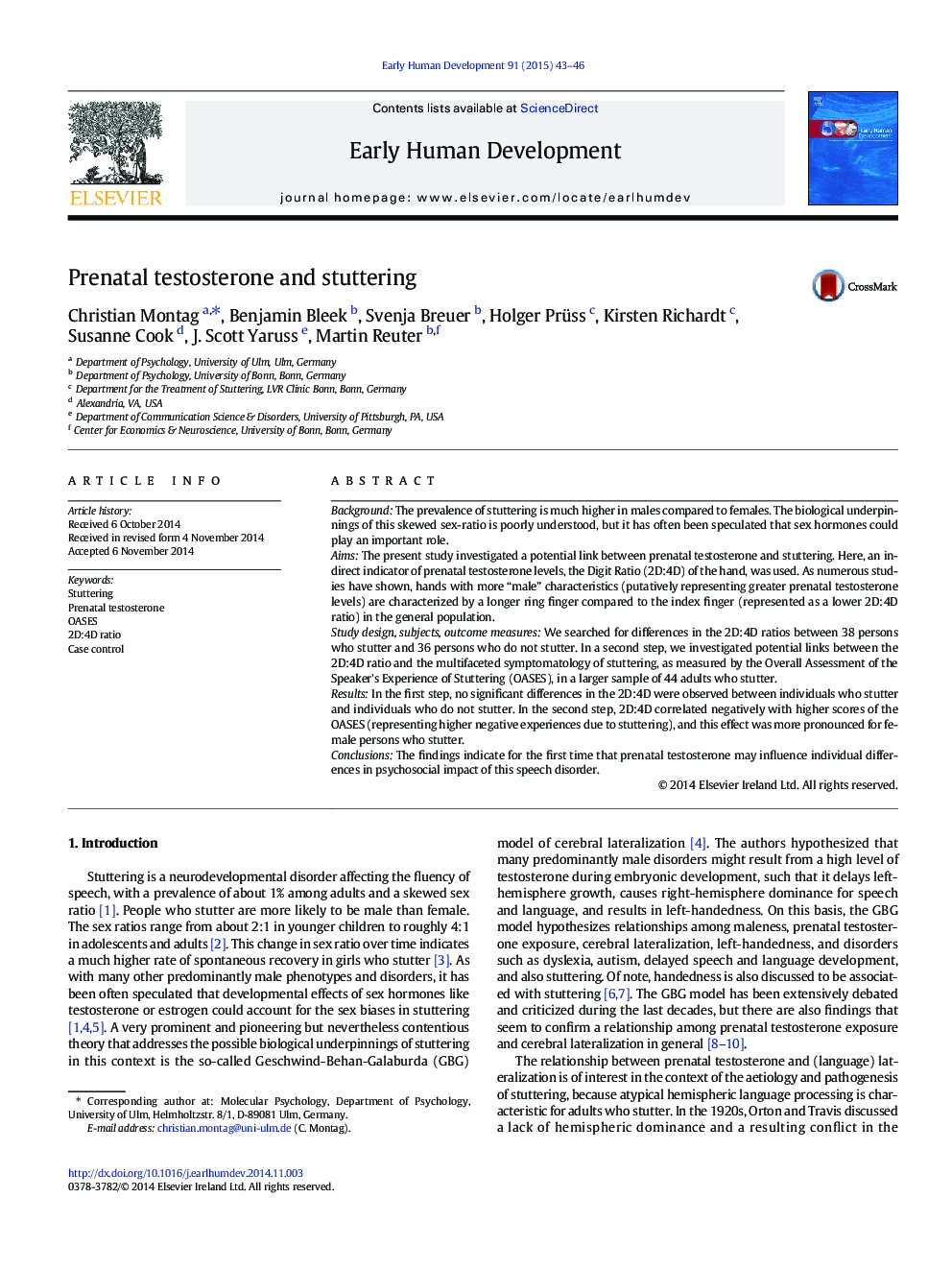| کد مقاله | کد نشریه | سال انتشار | مقاله انگلیسی | نسخه تمام متن |
|---|---|---|---|---|
| 3917955 | 1252157 | 2015 | 4 صفحه PDF | دانلود رایگان |
• The link between stuttering and prenatal testosterone is investigated.
• Prenatal testosterone is measured by an indirect marker in adulthood.
• The digit ratio of the hand indicates prenatal testosterone levels.
• Females with higher prenatal testosterone suffer more from stuttering.
BackgroundThe prevalence of stuttering is much higher in males compared to females. The biological underpinnings of this skewed sex-ratio is poorly understood, but it has often been speculated that sex hormones could play an important role.AimsThe present study investigated a potential link between prenatal testosterone and stuttering. Here, an indirect indicator of prenatal testosterone levels, the Digit Ratio (2D:4D) of the hand, was used. As numerous studies have shown, hands with more “male” characteristics (putatively representing greater prenatal testosterone levels) are characterized by a longer ring finger compared to the index finger (represented as a lower 2D:4D ratio) in the general population.Study design, subjects, outcome measuresWe searched for differences in the 2D:4D ratios between 38 persons who stutter and 36 persons who do not stutter. In a second step, we investigated potential links between the 2D:4D ratio and the multifaceted symptomatology of stuttering, as measured by the Overall Assessment of the Speaker's Experience of Stuttering (OASES), in a larger sample of 44 adults who stutter.ResultsIn the first step, no significant differences in the 2D:4D were observed between individuals who stutter and individuals who do not stutter. In the second step, 2D:4D correlated negatively with higher scores of the OASES (representing higher negative experiences due to stuttering), and this effect was more pronounced for female persons who stutter.ConclusionsThe findings indicate for the first time that prenatal testosterone may influence individual differences in psychosocial impact of this speech disorder.
Journal: Early Human Development - Volume 91, Issue 1, January 2015, Pages 43–46
